📣 For more lifestyle news, click here to join our WhatsApp Channel and also follow us on Instagram
G20, geo-tourism, and cultural and natural heritage: Exploring Khajuraho and Panna
While Khajuraho is internationally recognised for its rich architectural grandeur of the Western Group of temples that UNESCO recognizes as world heritage, the districts of Chhatarpur and Panna have lesser-known destinations that can serve as model local tourist destinations
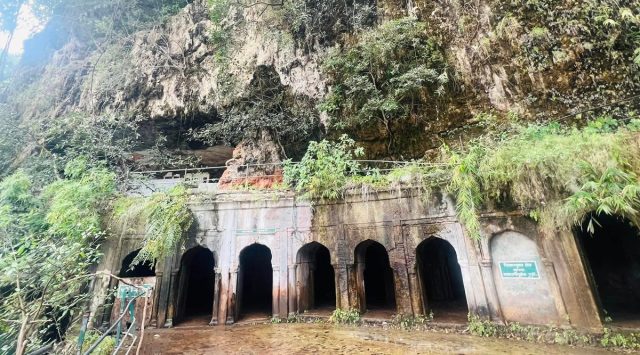 Pandav Caves (Credit: Swasti Pachauri)
Pandav Caves (Credit: Swasti Pachauri)Dotted with incredible ghost trees (Kullu), amid nature trails, and a terrain made of soft red soils amid the magnificence of pink, grey, and other rocks is the hidden jewel called Raneh in the state of Madhya Pradesh. Situated 20 km from the temple town of Khajuraho, Raneh waterfall is a local tourist attraction in the Chhatarpur district, nestled amid the majestic jungles of Panna – a biosphere reserve in the state.
Anil Kumar, a local tourist guide, passionately talks about the volcanic eruption that led to this geomorphic formation, otherwise known as the “mini-Grand Canyon of India.” He points at the dolomite and granite structures and recounts the difference between igneous and sedimentary rocks, telling us how these are important “general knowledge” questions for “competitive exams.”
The state of Madhya Pradesh is rich in its natural and cultural heritage. More recently, the state’s tourism sector has forayed into water tourism with events such as the Gandhi Sagar festival and the recently concluded ‘Jal Mahotsav’ utilising this potential of the state, clubbed with the goals of hydro-power or Sustainable Development Goal (SDG) 7 around clean energy, SDG 13 around climate action, etc. Advertisement campaigns such as “rang hain, malang hain,” “hindustan ka dil dekho,” or “MP gajab hai” are jingles that resonate to date with nature and heritage enthusiasts. The state, which also goes to the polls later this year, recently hosted the ‘Khelo India Youth Games,’ aiming to recover the sports and tourism sectors that stagnated during the COVID-19 lockdown.
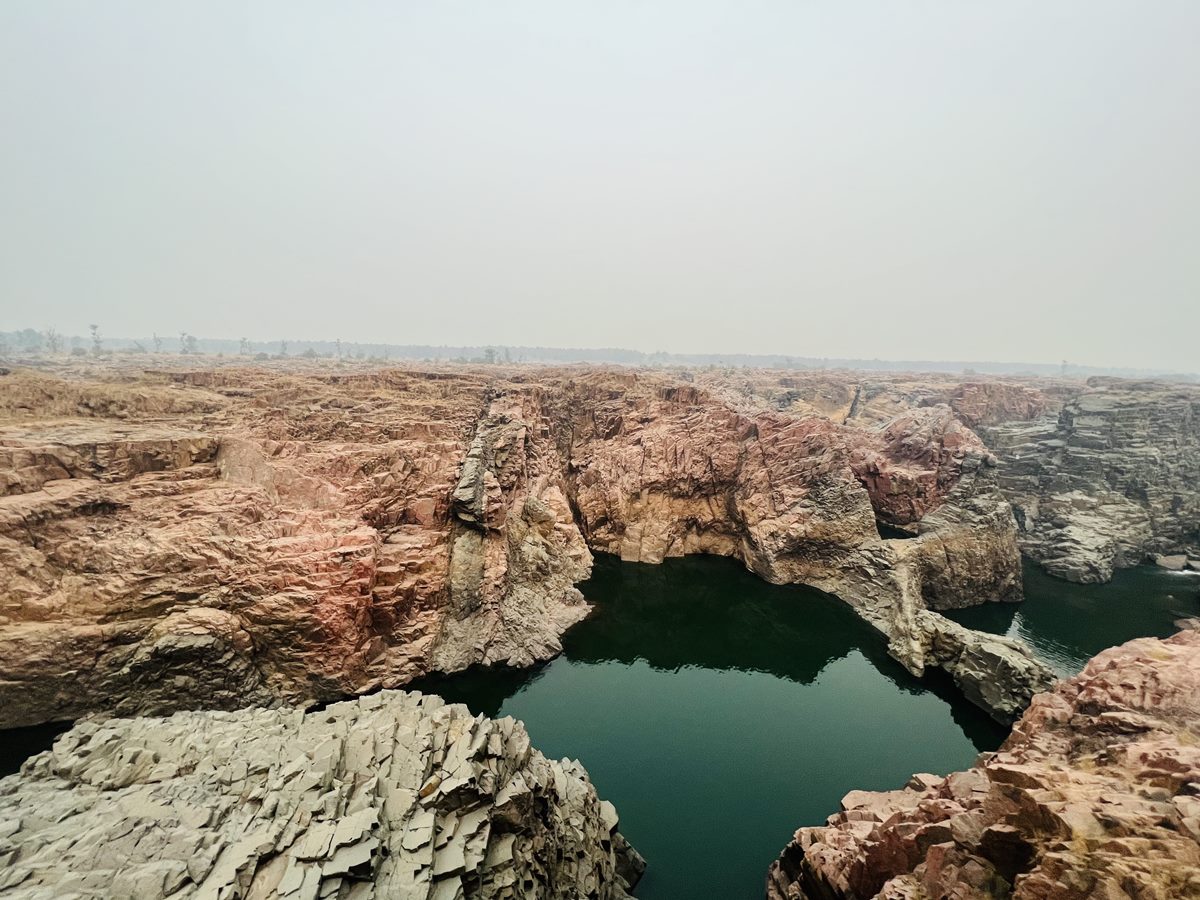 Also called the mini grand canyon of India, Raneh crater is surrounded by igneous rocks (Credit: Swasti Pachauri)
Also called the mini grand canyon of India, Raneh crater is surrounded by igneous rocks (Credit: Swasti Pachauri)
Similarly, adding to its annual splendour of the Khajuraho Nritya Samaroh or the Khajuraho dance festival, which began yesterday, is the upcoming G-20 meeting – the first meeting of the culture working group organised by the Ministry of Culture, Government of India in Khajuraho from 22nd to 25th February 2023. This meeting is themed around Culture for LiFE’- an environmentally conscious lifestyle as a campaign for sustainable living focused on sustainability principles, environmental ethics, and responsible consumption and production, or SDG 12.
While Khajuraho is internationally recognised for its rich architectural grandeur of the Western Group of temples that UNESCO recognizes as world heritage, the districts of Chhatarpur and Panna have lesser-known destinations that can serve as model local tourist destinations, in line with the Government of India’s programmes. For instance, recently, the government proposed the draft of the ‘Geo-heritage sites and Geo-relics (Preservation and Maintenance) Bill, 2022, which aims at the preservation, protection, and maintenance of geo-heritage sites and geo-relics of national importance for education, research, geological studies, and awareness among citizens. Additionally, Madhya Pradesh popularly contributes to geo-history through its fossil and dinosaurs parks – the Ghughwa fossil national park in the Dindori district and the Bagh dinosaur site –pitching for the UNESCO global geopark status add to the diversity in tourism that the state offers.
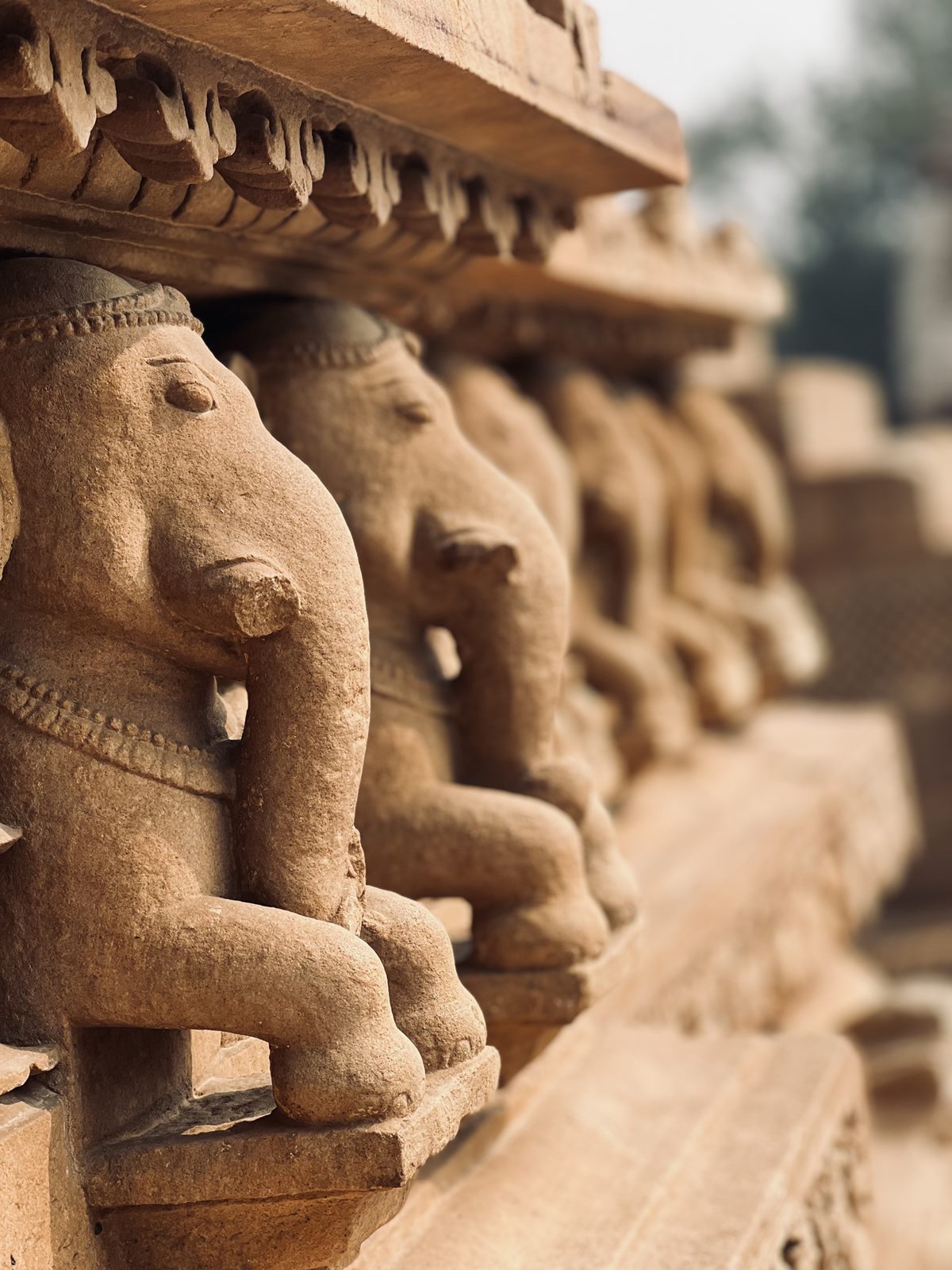 Architectural splendour of Khajuraho (Credit: Swasti Pachauri)
Architectural splendour of Khajuraho (Credit: Swasti Pachauri)
Similarly, exploring opportunities in and around Khajuraho and Panna can offer economies of scale and generate positive externalities.
Culture and geo-tourism around Khajuraho
Geo-tourism around several rock formations and waterfalls could be a potential area for the state government to expand while being mindful of the threats from mining, damage to natural capital, and community displacement. The multi-coloured rocks in Raneh are marvels in stone. Different igneous rocks exist, mainly granite, dolomite, jasper, quartz, and sandstone. Forming a deep gorge (around 5 km) and a 30-meter-deep canyon due to volcanic eruptions, the marvellous stone and rock formations of Raneh form a splendid sight to behold. The Raneh waterfall comes to life during monsoons, but waters from “Karnavati” or Ken keep the main waterfall perennial throughout the year. The emerald green water resembles “Panna,” or emerald gemstone.
“Yahan local tourism ka bahut potential hai. G 20 meeting se Raneh waterfall aur aas paas ki jagahon ka acha hoga“, says a local craftsperson, Kishan, who specialises in sculpting idols, toys, and sculptures.
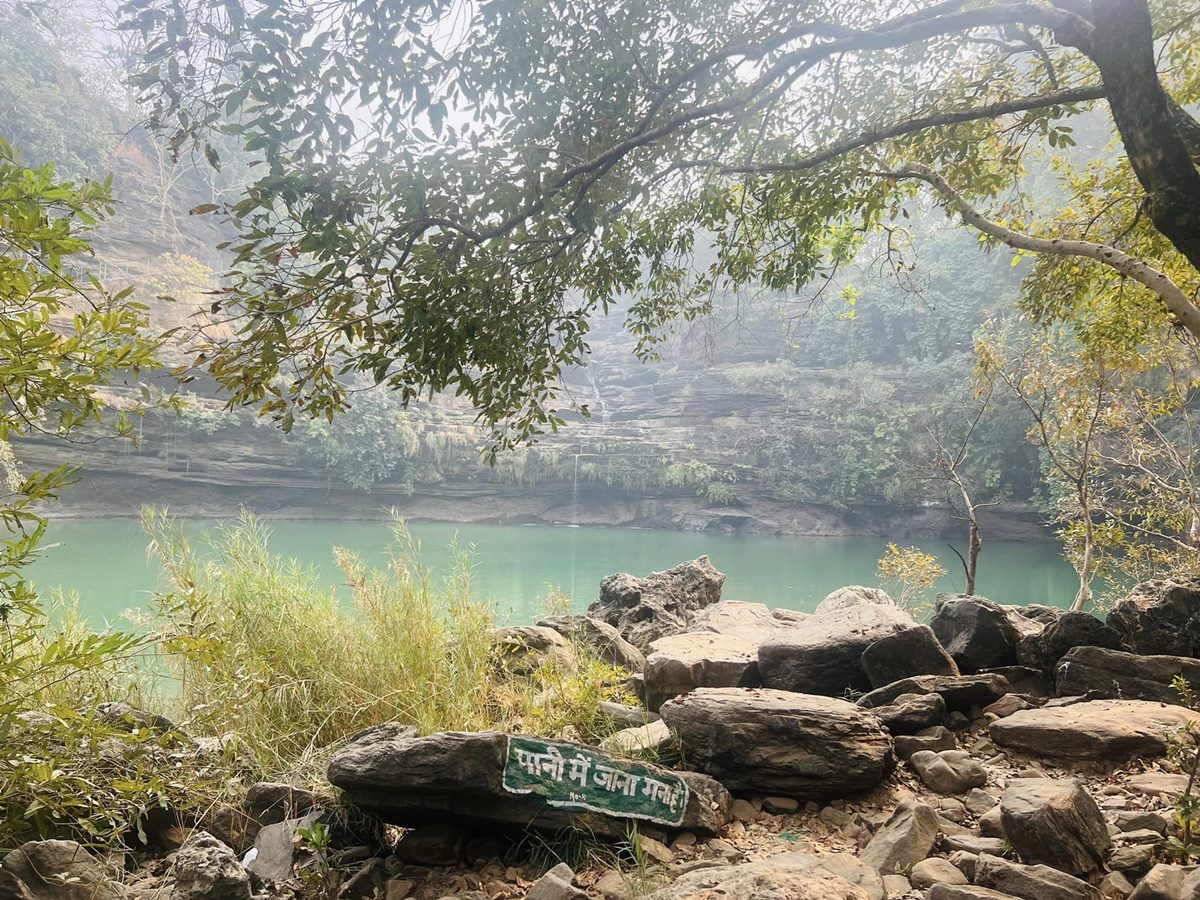 Pandav Falls reservoir and rocks around (Credit: Swasti Pachauri)
Pandav Falls reservoir and rocks around (Credit: Swasti Pachauri)
In general, the state of Madhya Pradesh is rich in its potential for stone or rock tourism with several tourist spots, including Bedhaghat, Orchha, Gwalior forts, Tikamgarh, and Narsingargh. Due to its rich geological capital, stone carving is a popular form of craft in the state. Varied colours of marble, artefacts made from stones and granite, latticework from Gwalior, and stone sculptures from Chhatarpur and Panna districts all add to the state’s cultural capital, contributing to rural livelihoods. For instance, the temple town of Khajuraho – that takes after the golden date palm tree or the ‘Khajur’ tree – also has Khajur crafts or handicrafts made of Khajur or dry leaves. Similarly, many local artisans sculpt idols out of stone – an important local industry in Chhatarpur. The district is famous for its unique terracotta pottery, with red soil being an integral part of geology here. Potters make idols and sculptures, taking inspiration from the temple architecture. Animal figurines are also popular, especially terracotta lanterns, horses, bells, lamps, and toys. Artisans can be seen selling the famous Chanderi silk sarees in the town. During Sankranti and Basant Panchami, several terracotta artefacts, primarily horses, are sold in high numbers.
Pandav caves and falls, Panna
The mystic Pandav caves and falls en route to the Panna tiger reserve are another mystery in stone. Characterised by relatively cooler climes, the natural waterfall forms a heart-shaped emerald-green reservoir. The geology is fascinating, and unlike Raneh, which is rich in igneous and volcanic formations, Pandav falls are rich in sedimentary rock formations, as locals say. Legends have it that Pandavas from the Mahabharat spent some time in the dense forests of Panna during their exile. Dotted with medicinally rich Arjuna trees, a favourite habitat of the sloth bear, Pandav caves and falls are surrounded by sedimentary rocks such as shale and limestone with various stalactite and stalagmite formations inside the caves. A perennial, very thin ribbon waterfall forms right above the caves. Locals believe the water here is naturally filtered with limestone and rich in medicinal minerals. Other places of interest include the Ajaygarh fort and Brihaspati Kund.
Natural capital: the Ken Gharial sanctuary, flora, and fauna of Panna
According to the forest report 2021, Madhya Pradesh has the largest forest cover in the country in terms of area. The state forest department has done significant work toward conserving and protecting gharials and vultures in the Panna region. One can spot gharials sunning over the rocks at the Ken gharial sanctuary, next to Raneh falls.
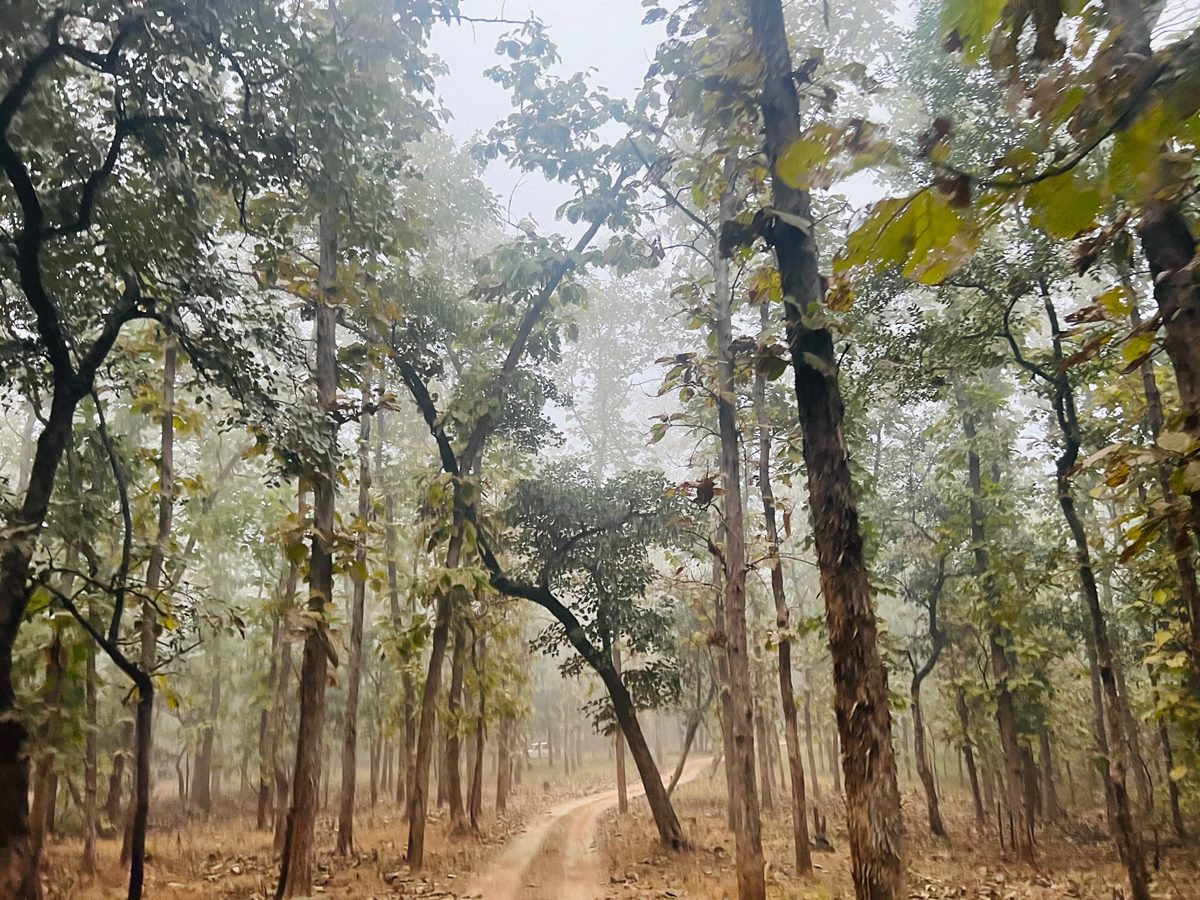 Teak trees in Panna (Credit: Swasti Pachauri)
Teak trees in Panna (Credit: Swasti Pachauri)
The tiger reserve is home to glorious fauna and flora, giving refuge to several species. A dry deciduous forest, rich in a grassland ecosystem, makes it easy for leopards to navigate. Apart from teak, palash, mahua, acacia, tendu, wood apple, bamboo, and saj (crocodile tree), several trees and plants of medicinal value are found here. Amla, or the gooseberry, is identified under the aegis of the ‘One District, One Product’ scheme. Many “Khair” (Catechu) trees are used in the colour and medicinal industry. The extract “Kattha” of the “Khair” tree is extensively used in a beetle or “Paan.”
There are several nesting sites for vultures in the tiger reserve. Naturalists say that seven of the nine vulture species found in India are found in Panna’s dense forests.
Way forward
The potential of geo-tourism combined with wildlife, forest, and culture in the Rewa-Panna plateau is immense. The Government of India has identified 32 geo-heritage sites in the proposed Geo-heritage sites and Geo-relics (Preservation and Maintenance) Bill, 2022. The Union Budget 2023-2024 has allocated INR 2400 crores to the Ministry of Tourism, thus focusing on the potential opportunities the sector aims to generate.
 View of Raneh falls and a Ghost tree (Credit: Swasti Pachauri)
View of Raneh falls and a Ghost tree (Credit: Swasti Pachauri)
The entire Bijawar-Panna plateau in the Vindhya range is rich in different rock formations. The G 20 meeting in Khajuraho will create ripple effects benefitting local people, artisans, and food entrepreneurs and produce enough opportunities for local economic development while also strengthening India’s soft power.
Knowledge-exchange programmes around geo-tourism with naturalists, geologists, and palaeontologists, and educational visits to the Majhgawan diamond mines in Panna could benefit students and enthusiasts, thus creating local livelihood opportunities, keeping sustainability principles, environmental ethics, and cultural sensitivities in mind. These initiatives shall also provide livelihood support to SHGs, artisans, local vendors, folk artists, dancers, naturalists, etc., supporting schemes such as #vocalforlocal and #atmanirbharbharat. Therefore, to speak of a dedicated geo-tourism and knowledge tourism circuit in this whole belt merits attention while strengthening cultural capital and natural heritage.
📣 For more lifestyle news, follow us on Instagram | Twitter | Facebook and don’t miss out on the latest updates!
📣 For more lifestyle news, click here to join our WhatsApp Channel and also follow us on Instagram



- 01
- 02
- 03
- 04
- 05
























